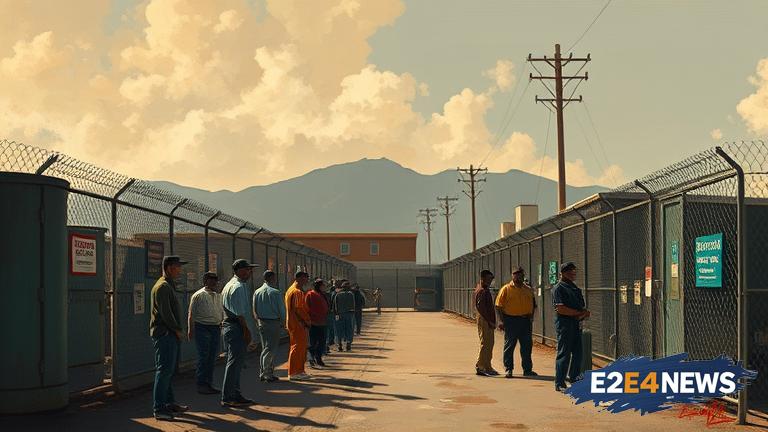The California prison system is facing significant challenges in its reform efforts due to the pervasive gang and drug culture within its walls. Despite efforts to reduce recidivism rates and improve living conditions, the influence of gangs and drugs continues to undermine these initiatives. The problem is further complicated by the fact that many inmates are affiliated with gangs, which often have more control over the prison environment than correctional officers. This has led to a culture of violence and intimidation, making it difficult for inmates to participate in rehabilitation programs or cooperate with authorities. Furthermore, the presence of drugs in prisons has contributed to the spread of addiction and related health issues among inmates. The smuggling of contraband, including cell phones and weapons, has also become a major concern, with some inmates using these items to coordinate criminal activities on the outside. In addition, the corruption of prison staff has been identified as a significant factor in the perpetuation of gang and drug culture, with some officers accepting bribes or turning a blind eye to illicit activities. The California Department of Corrections and Rehabilitation has implemented various measures to address these issues, including increased security measures and rehabilitation programs. However, these efforts have been met with limited success, and the problem persists. Experts point to the need for a more comprehensive approach to addressing the root causes of gang and drug culture in prisons, including poverty, lack of education and job opportunities, and mental health issues. Moreover, there is a growing recognition of the need to provide inmates with access to effective rehabilitation programs, including counseling, education, and job training. The use of technology, such as surveillance systems and drug detection equipment, has also been proposed as a means of reducing the influence of gangs and drugs in prisons. Nevertheless, the challenges facing California’s prison reform efforts are significant, and it remains to be seen whether these measures will be sufficient to address the deeply ingrained problems of gang and drug culture. The situation is further complicated by the fact that many inmates are serving lengthy sentences, which can limit their access to rehabilitation programs and increase their likelihood of becoming embroiled in gang activity. In recent years, there have been several high-profile incidents of violence and corruption in California prisons, highlighting the need for urgent action to address these issues. The state’s prison system has also faced criticism for its handling of inmate complaints and its response to incidents of violence and misconduct. Ultimately, addressing the gang and drug culture in California prisons will require a sustained and multifaceted effort, involving not only the correctional system but also community organizations, law enforcement agencies, and government policymakers.
